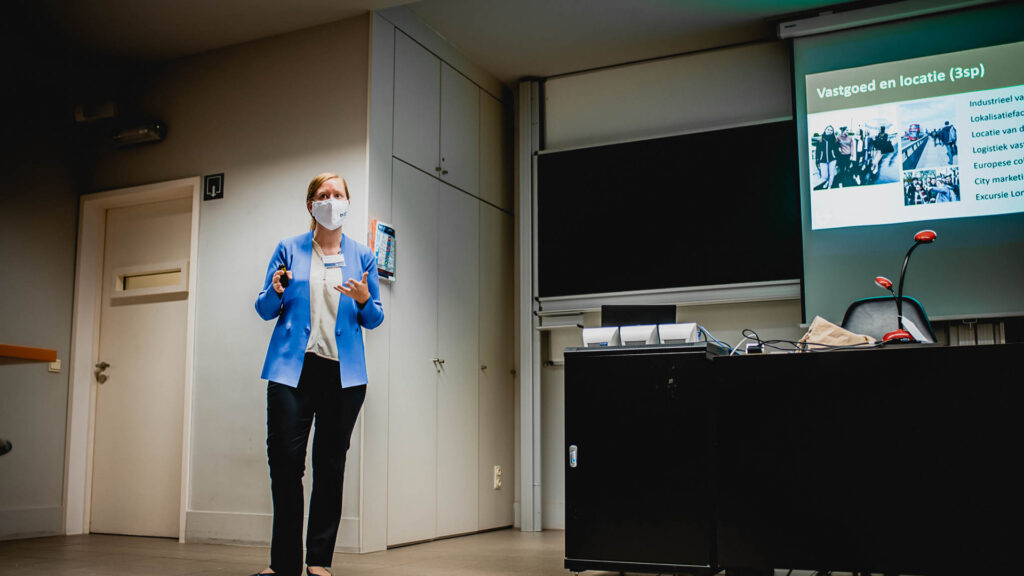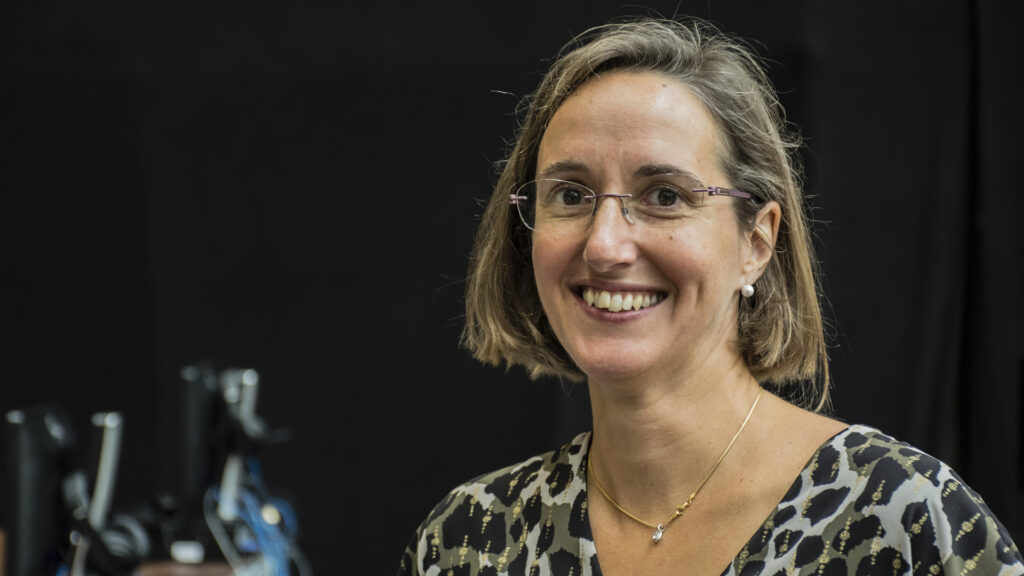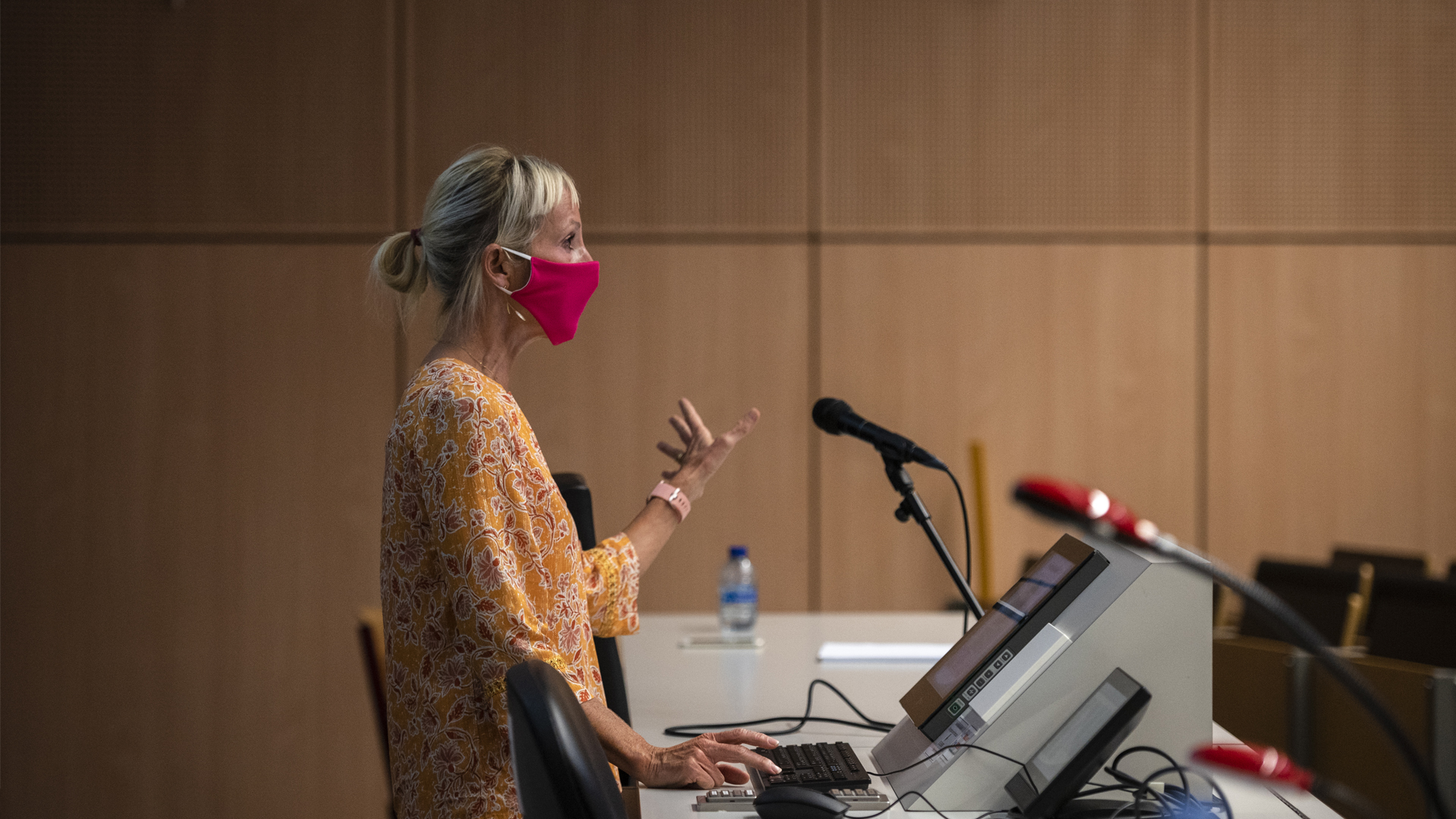What was your experience with online education this spring? That’s the question we asked students and lecturers alike over the summer. Most of them thought it was ok overall, but they did highlight several areas for improvement. For one thing, students want to get more feedback over the course of their learning process. Here’s an overview of the key results and good practices.
Online education is likely to remain ‘the new normal’ for the foreseeable future. That’s reason enough to take a closer look at the different ways remote learning was put into practice in the second semester of the 2019-2020 academic year. More than 5000 students and 600 lecturers completed the Education Department’s survey. The good news is that most of them look back on the remote learning experience positively: 65% of students and 87% of lecturers said that overall, they were happy with how things went.
Practical obstacles
Not that everything always went smoothly, of course. Even though almost all students (96%) and all lecturers (100%) had a laptop or desktop computer at their disposal, quite a few of them reported equipment or infrastructure issues. For example, almost one in three people reported not having a quiet place to work. Obviously, having entire families stuck at home during the lockdown had something to do with that. Another frequently cited obstacle was the internet connection: two in ten students and three in ten lecturers said that the stability of their internet connection left much to be desired. Only four in ten students and three in ten lecturers reported no practical obstacles whatsoever. It is likely that teachers experienced more issues because they faced tougher technical challenges, like having to organise online lectures.
Online teaching: what works and what doesn’t?
According to the students, the most frequently used online teaching methods were pre-recorded lectures, live online lectures, and online PowerPoint presentations. About 60% got online feedback on assignments, and 40% got to take online tests to check whether they had understood the learning content. And yet, more than 80% indicated a need for this type of support. Virtual Q&A sessions and online response sessions were also important to around 85% of all students.
Lecturers also preferred certain teaching methods to others. Even though live online lectures were the second most frequently used teaching method, about a quarter of lecturers said they would probably not use this method again in the future. Live online presentations by students and live online practice sessions, seminars, lectures and practicals also proved challenging: 30% and 33% of lecturers, respectively, said they would not choose this option again. The fact that these teaching methods were more susceptible to technical problems may explain this reluctance. Our ICT service has been working hard to reduce these problems, for instance by increasing streaming capacity.

More than 60% of students attended live lectures as they were broadcast. The main reason for this was that it gave structure to their day (76%), followed by the fact that it encouraged them to actually watch those lectures (65%). Nevertheless, over 55% also used the option to watch recordings of live lectures at a later time. The reasons cited included the possibility to take short breaks (86%) and being able to watch the recording at a more convenient time (81%).
What’s best done on campus, and what can be done online?
Which teaching methods are a success online, and which of them fall short? This was also explored in the questionnaire. Not surprisingly, the answers depend on the programme component being taught. For example, over 70% of students feel that asking questions and getting answers from the lecturer and receiving feedback on assignments are things that can be done online half of the time, or even more often. However, nine in ten students feel that learning practical skills is best done on campus, as is practising academic skills (almost 70%) and working on group assignments (about 60%).
And what about the presentation of new subject matter? Around 45% of students would prefer this to happen on campus, while 30% see a 50/50 balance between online and face-to-face education as ideal. Only a little over 40% of lecturers agree that this form of teaching is best done on campus – at least when large groups are involved. More than 35% believe that this can also be done entirely or largely online.
Prepared for exams?
The survey also uncovered a number of downsides. One of these was the extent to which students felt prepared for exams. Although just under 60% felt that online education had prepared them well for tests, about seven in ten felt that they had not had sufficient opportunities to test whether they had mastered the subject matter. An equally large group would have preferred more feedback on the learning process. Among first-year students, this percentage was almost 80%.
Most students were satisfied with the communication about exams: about three quarters felt that there was clear communication about changes in the examination methods and about the subject matter, and that their lecturers were sufficiently accessible.
More stress, but also new possibilities
Online education also proved challenging in terms of study and work pressure: 60 to 70% of students experienced a higher study load and level of difficulty, although for most of them the impact was not dramatic. When asked whether remote learning was conducive to their efficiency, concentration and motivation, 60 to 80% answered no. First-year students in particular did not agree with this. Furthermore, 65% of students experienced more stress.
Lecturers also felt a considerable impact: more than 40% said the workload had ‘increased significantly’, and an equally large percentage said it had ‘increased somewhat’. On the positive side, four in five felt competent enough to make the transition to online education, and nine in ten said they would likely be able to use the expertise gained and the materials developed in the future. Seven in ten actually want to make more use of blended or online education in the future, with 73% asking for more support and professionalisation.
Online education in practice: here’s how they do it
‘All steps in one big PDF file’
‘More than a hundred questions in one lecture’
Christine Lippens, a teaching assistant at the Department of Accountancy & Finance, likes to use one big PDF file that she shares via Blackboard Collaborate. Initially, she took this approach for lectures that were attended in-person by some students and by others online. But it’s also perfect for use in 100% distance learning.
‘I compile all the steps I want to explain or have the students think about into one big PDF file, or several smaller ones’, Christine explains. I don’t write anything on the board, as every recap and reminder is already included in the file.’ All students attend the session online, and Christine shares the PDF via Blackboard Collaborate, using the Share File option.

Feel free to ask
Christine: ‘Throughout my lectures, I fire off lots of short questions – sometimes more than a hundred in one lecture. The students type their answers directly into the designated space in the shared file, so they see each other’s answers. I leave part of the page blank for this purpose. This screen full of the students’ answers is then followed by a neat and orderly page which shows the correct answer. Anyone who has a question can type it out on-screen, and then I answer it orally.’
Recently, Christine has also had students work together in groups of two or three, via shared Google Sheets. She prepares a Google Drive folder in advance, with a spreadsheet for each group.
Christine says she doesn’t need a lot of materials for all this. She uses her own webcam and wireless headset. ‘The students are happy to participate. Since all answers are anonymous, there are no inhibitions. I actually have to ask them to wait a bit before they start answering sometimes, so that everyone has a chance to let the question sink in’, she laughs.
‘Interaction is what makes it interesting’
Christophe De Block, a professor in the Faculty of Medicine and Health Sciences, also had positive experiences with Blackboard Collaborate Ultra. He used the system for pre-recorded lectures, response lectures, workshops with polls, and live patient meetings. Interactive teaching methods proved to be particularly popular with his students. If you want to know exactly how he went about it, watch his video on YouTube (in Dutch):
More tips
For more tips and inspiration on how to organise remote learning, be sure to check out the ‘Teaching on campus and online’ page. If you have any questions about online and blended education, you can always contact your faculty’s CIKO member.


